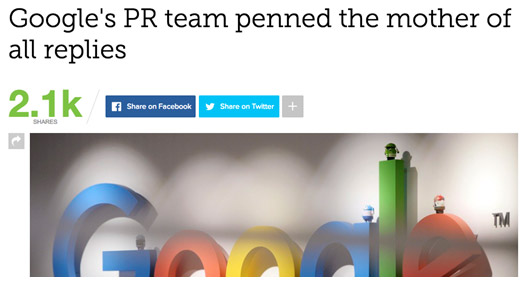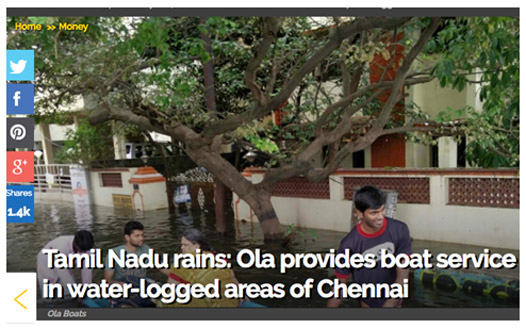How to fight fake news
PR Insight
 It’s the current nightmare of every brand. Someone forwards a rumour about your firm on WhatsApp and bam! You are in the middle of a social media crisis.
It’s the current nightmare of every brand. Someone forwards a rumour about your firm on WhatsApp and bam! You are in the middle of a social media crisis.
As Radha Radhakrishnan - country head, India at Gutenberg declares, “Fake news is the next form of yellow journalism in the digital world. It is gaining the proportion of an epidemic. The propagators of fake news are like carpet bombers. It is not an acceptable tactic, but nonetheless resorted to for quick impact and results.”
Brands must fight fake news
Commenting on the extent of fake news, Arvind Nair, director client services, GBM Digital Studio at Genesis Burson-Marsteller explains that,“Recently google revealed that it took down 1.7bn ‘bad ads’ in 2016. that’s an indication of the number of digital sites and advertisements that run and could potentially be fake. Brands should have an active and diligent monitoring system in place that flags off any mention or news. They should also, have a crisis preparedness and scenarios mapped out to tackle something, as damaging as fake news. In each scenario, one should assess the impact level, from low, moderate to high for each crisis as a tool to determine the requisite level of response.”
Digital PR experts also believe that in this time of fake news a second, brands must fight any rumour aggressively. Says Anup Kamat, digital executive, “When it comes to fake news, brands must fight fire with fire. Press releases and clarifying statements can only go so far in the land of Facebook and WhatsApp – the two largest social platforms. Brands must ensure their communication is just as sensational as the fake news they are trying to counter.”
Humor helps.
Kamat points out that, “An apt example here would be how Google issued a witty response to speculation of them looking to buy Condé Nast: “You seem Wired into the latest chatter. We got some Backchannel from a New Yorker that this gossip was en Vogue. When your question came in and we Reddit, it made us quite Epicurious because your stories have some Allure. But Self-ishly we don't comment on rumors (Glamour-ous or otherwise). Bon Appétit!"”

(Source: Mashable)
Giving an Indian example of an effective takedown of a ‘rumour with humor’, Kamat cites Ola’s approach. He says, “Brands can also work the fake news in their favour. Fake news and trolls can be an opportunity rather than a hindrance – if the brand is willing to take up the challenge. The 2015 South India floods gave trolls an opportunity to circulate memes about Ola dispatching boats to help people in Chennai commute. Never missing a beat, Ola took the opportunity and dispatched Ola Boats to help with the rescue operation. Bet the trolls didn’t see that coming!”

Source: DNA India
Building brand loyalties to fight fake news
In preparation for fighting fake news, Amit Gundh, head – digital & social media strategy at Ruder Finn Asia says offering credible, verifiable sources of information is key. He also adds that, “Speed is of the essence here. Having a highly responsive, verified social media channel is an example. This helps brands address their audience quickly in case of a rumour/hoax. The senior management also should be agile enough to get involved where necessary.”
Gundh agrees that fake news is here to stay as a phenomenon, “Brands will be constantly threatened with rumours, more so as the black social media (closed-group or secure social media like WhatsApp), where conversations cannot be tracked, gains popularity. What is dangerous is that, on such channels, entertainment, shock value or simply ‘I told you first’ gratification can drive a rumour. Brands will make creative use of mass media, direct communication channels and brand advocates to listen and address such issues.”
Citing an example of effective building of brand advocates in the pre-social media era, Gundh says, “An old, but highly relevant example: When a McDonald’s arrived in India (in 1995), one of its main advocacy building exercise involved regularly inviting groups of advocates and consumers for extensive outlet tours. During these tours, visitors including school teachers, nutritionists, children and media would be shown the processes followed in the kitchen- hygiene, keeping vegetarian and non-vegetarian stuff separate and the quality of material used. In times of a rumour or false allegation, these advocates help counter such attacks on the brand.”
Nair says that internal advocates are a huge help, “Leverage your own employees. That’s the largest organic spread of content that any brand can leverage. They know the culture, values, and are part of what constitutes the brand ethos.”
“The rise of Artificial Intelligence and machine learning will open up more avenues for social platforms to manage fake news. AI will be able to rapidly cross-verify snippets of information with credible sources to flag and eliminate fake news articles. Even articles which have partial truths can be easily analysed with such advances in technology. While AI is still in its infancy, the growth in this field has been exponential and it may not be long before we see AI systems tracking trolls.”
Anup Kamat , digital executive
Why Technology is the key to fighting fake news
Facebook and Google have long been trying to counter the rise of fake news. But Kamat believes this is currently with little success. He does say that, “Facebook is currently testing a feature where users will be able to flag unverified news articles which could be fake. If an article raises enough red flags, Facebook will have the article scrutinized and then flagged as ‘fake’. Even their algorithm will de-prioritize the posts containing the article, to reduce their reach across their platform. While there are several obvious bottlenecks to this plan, this is a step in the right direction.”
The bigger challenge lies with WhatsApp a hotbed of unverified news. Kamat admits that, “Unfortunately, this may not be a viable solution for Facebook’s another fake-news-spawning platform: WhatsApp. The massive amount of misinformation spread by this one platform would be hard to fathom and we’ve all been victim to this misinformation at one point or another. There might be other methods that might work, though. Verification can be one of the easiest ways WhatsApp can counter fake news. Just like Twitter, WhatsApp can invite brands, and Government bodies to have their WhatsApp account verified. Post this, any message the brand or Government body broadcasts will be marked as ‘verified source’ even if a user forwards it to other groups without any modification. If the communication is modified or edited in any manner, the message will lose the ‘verified’ badge. Introducing such a feature might not put a stopper to fake news, but it’ll be a start.”
If you enjoyed this article, you can subscribe for free to our weekly event and subscriber alerts.
Featured

PR professionals share their views on journalists publicly calling them out on story pitches

Auto blogger renders unconditional apology to Value 360 for defamatory posts

Hottest Indian startups of 2020, Paytm, Dreams 11 lead the charge: Wizikey Report




